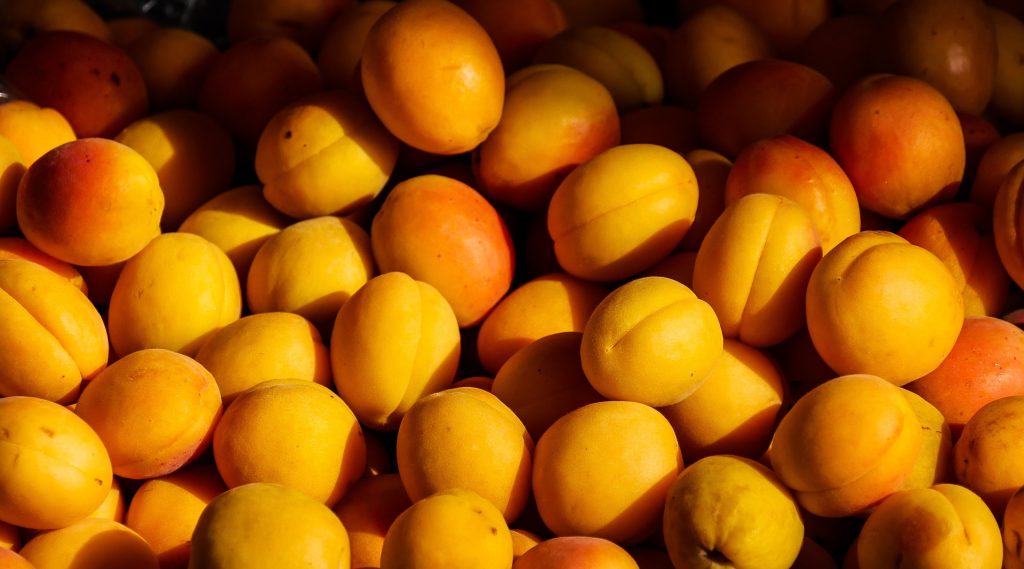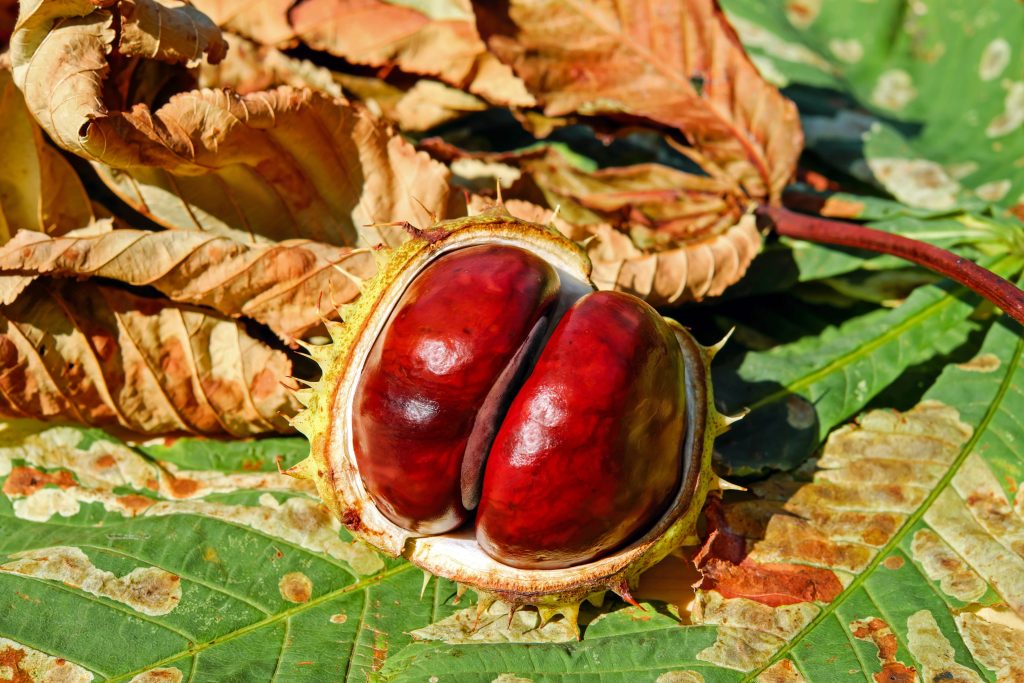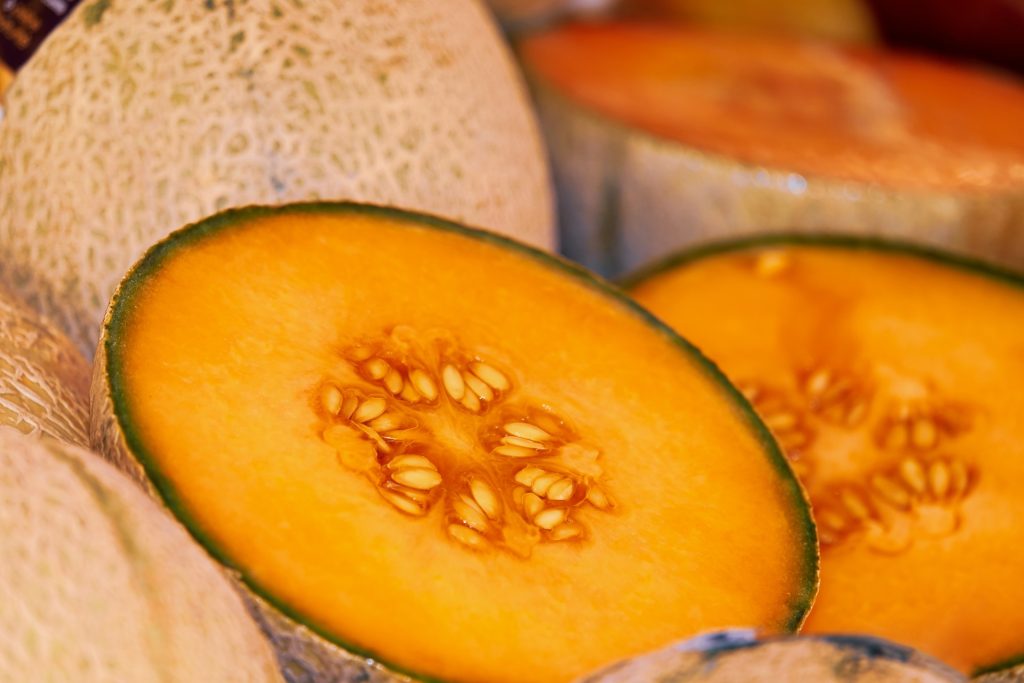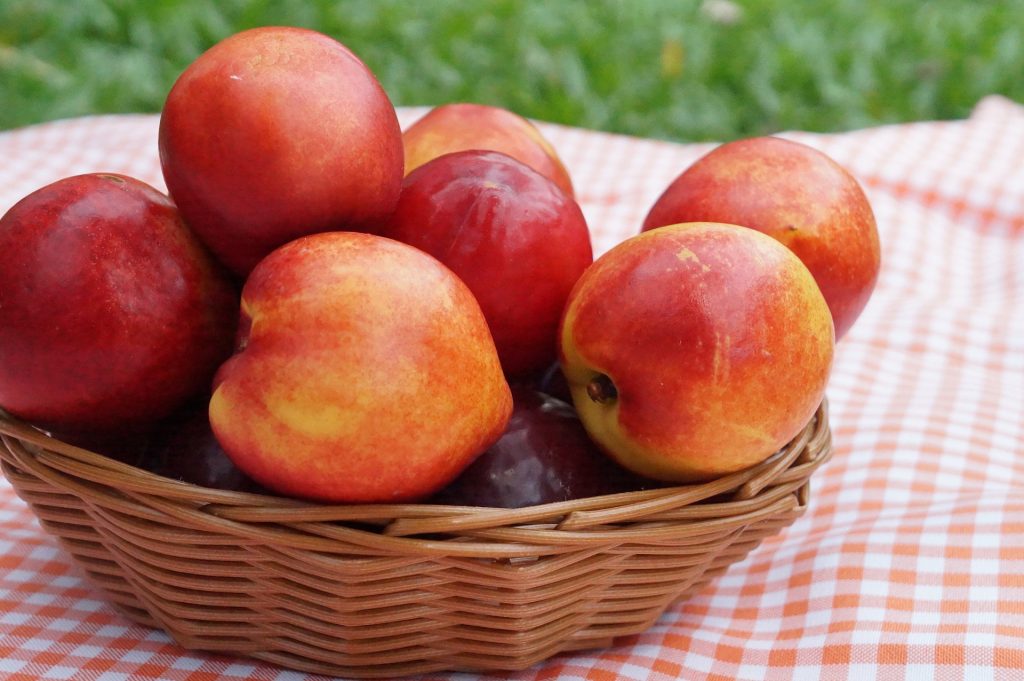Blog
Find articles that matter. From trading to shipping, trends to valuable goods, you can deep dive into everything you need.
Latest Posts
Blog
Transportation is the movement of an object or a person from one location to another. People generally regard transportation as a necessity. As technology advances, transportation modes become increasingly diverse. The four modes of transportation include land transportation, sea transportation, air transportation, and rail transportation.
Each form of transportation demands a particular technological solution, whereas others necessitate a different environment. Each method of transportation has its own infrastructure, vehicles, operators, and processes. In this article, we are discussing the advantages of each mode of transport.
Advantages of Land Transportation
Road transport is one of the most commonly used modes of transportation in the logistics industry due to its extensive road network. Deliveries can be made all around the world using this method of transport. Furthermore, lower-cost infrastructure investment is required. Additionally, because of the infrastructure and geographical aspects, sea, air, and train transportation cannot always offer transit to the targeted area. In such a situation, road transportation can serve as a complement.
Regardless of the time and place, loading and unloading are possible. It is one of the most preferred transportation modes in the world with the advantage of leaving loads on more than one route. Road transport is known for being flexible and allows door-to-door transport. This mode is extremely advantageous for loads that need to be delivered in a short time.
The loads are fused, reducing the possibility of breaking, distortion, and load loss. Road transport has an economic advantage since it allows efficient transportation in a short period of time. Other than loading and unloading, other operations are kept to a minimum, and expenses are minimized. Furthermore, the packaging fee is cheaper than other modes of transport.
Loads are delivered to locations that cannot be accessible by water or air transportation. It is important in transferring loads of various volumes, in addition to small loads. For these reasons, it is one of the most popular modes of transportation in the world.
Advantages of Sea Transportation
Sea freight is one of the oldest known modes of transport. It can provide delivery to overseas countries and various port cities. Among the advantages provided by this mode of transport, there are also privileges such as environmentally friendly shipment, secured delivery, and affordable cost.
In addition to containers, bulk goods and general cargo are transported via sea transportation. One of the most well-known benefits of sea transport is security. International sea transport ensures that the products arrive safely at the appointed port. Moreover, the equipment utilized in this transportation, such as crates, pallets, and containers, is resistant to external conditions.
One of the other features of sea transportation, which is particularly significant for economic transactions all over the world, is that it allows for the easy transportation of very large amounts of goods. In other words, it is the most cost-effective method of delivering relatively larger loads across distant locations.
Because of its minimal carbon footprint, sea shipping stands out as an ecologically friendly mode of transportation. Affordability can be also cited as an important advantage in sea transport. The absence of various border checkpoints, road maintenance, and crossings which might slow down the shipping process contributes to the speed of this mode of transportation. It is the earliest known and most well-established method of transportation; hence, it is a rapidly developing and growing sector.
Advantages of Air Transportation
Air transport is the process of flying passengers and goods from one location to another using aircraft, particularly airplanes. Air travel provides benefits in terms of speed and safety. It is commonly used in transcontinental transportation operations.
Direct routes are utilized in air transport. As a result, the system is remarkably quick and effective. Mostly all long-distance passenger travels in the modern world are performed by air. Because there are so many options for air freight, costs are also quite adjustable.
It is an appropriate mode of transportation for costly, potentially perishable goods and commodities with expiry dates. Air freight contributes to the preservation of goods’ market value. It is preferred for cargoes that require immediate delivery, such as medications, vaccinations, and medical supplies. Small-volume loads can be transported in conjunction with large-volume loads.
It can frequently reach regions where other modes of transportation cannot. Air freight also enables the safe delivery of sensitive loads. It follows procedures that make customs procedures easier and has a well-functioning logistics system. To summarize, air travel is a convenient and high-quality choice.
Advantages of Rail Transportation
Railway transportation, which has a key place in the logistics industry, realizes an important part of international trade with its varied advantages. Strict supervision and monitoring procedures ensure the safety of the railways. Guaranteeing the shipments eliminates the risk of theft, damage, or loss. It is the most physically and financially suitable mode of transportation for large tonnage and bulky loads. Furthermore, it provides the option of year-round transportation at fixed pricing.
Because of the minimal impact of poor weather, rail transport is available throughout the year. It is also unique in that it is the only transportation method that is not impacted by weather conditions. Because it is constructed with Block Trains, it enables continuous transit. As a result, rail transit is faster than marine transport. Transactions and border waits are also kept to a minimum.
Finally, the most significant advantage of railway transportation is that it is environmentally friendly. According to all forms of transportation, it is the most ecologically beneficial in terms of energy consumption. It is a forerunner in the battle against noise pollution. The roadway reduces traffic congestion and is safer than other modes of transportation. In advanced nations, railways can be considered as one of the most significant means of transportation.
Many kinds of transportation are actively employed for passenger and freight transit around the world. Transportation is a critical factor that influences a country's level of development. Each mode has its own set of benefits and drawbacks. The mode of transportation can be determined by the type and weight of the cargo to be transported, as well as by additional details.
Grapefruit is a type of fruit belonging to the Citrus family. The fruit has a bitter-sour taste and is red and orange. Grapefruit is a tropical and juicy fruit rich in minerals and vitamins. Like all other citrus fruits, grapefruit is suitable for growing in warm climates. Growing grapefruit in regions where the air temperature drops below -9 degrees is impossible. There are varieties of grapefruit in different sizes, colors, and flavors. There are about 20 varieties of grapefruit that are grown and most consumed in the world.
Grapefruit begins to be harvested in October and November and is a healthy citrus fruit most consumed in winter. So which countries grow this healthy and delicious fruit and which countries export it? In this article, we will talk about the answers to these questions. Let's dive into the leading countries in grapefruit export together.
All About Grapefruit
Citrus fruits are fruits of different types and flavors. In addition, citrus fruits are a group of fruits that are frequently consumed around the world due to their known positive effects on health and nutrition. Grapefruit is a fruit belonging to the citrus family. Like other citrus fruits, this fruit is used in many areas, including other food industries. Grapefruit is consumed fresh, processed, and used as a raw material for many by-products. Examples are grapefruit juice, marmalade, and canned foods. Grapefruit is a fruit that is also used in the chemical industry. Products such as perfume, shampoo, and soap are produced from the volatile fatty acids of grapefruit.
Benefits of Grapefruit
Grapefruit is a fruit rich in vitamin C. In this way, the consumption of grapefruit strengthens the immune system. Besides, the fruit acts as an antioxidant and maintains skin health. It contains calcium, iron, and magnesium minerals. Grapefruit is a fruit that should be consumed to protect and strengthen the immune system during the cold winter months.
Most Consumed Types of Grapefruit
There are dozens of varieties of grapefruit, and these varieties differ from each other in terms of color and taste.
Pink Grapefruit
Pink grapefruit has a sour and sweet flavor. In addition, pink grapefruit is the tastiest type of grapefruit. It is the most preferred grapefruit variety for fresh consumption and for making grapefruit juice.
Red Grapefruit
The redder the color of a grapefruit, the sweeter it is. Red grapefruits are an excellent source of lycopene and beta-carotene.
White Grapefruit
White grapefruits have a sour taste but are not too bitter. This type of grapefruit has the most aromatic smell. It has a uniquely beautiful scent. In particular, it is used to make shampoos and perfumes.
Top Grapefruit Exporting Countries
In the 2020-2021 agricultural season, approximately 6.7 million tons of grapefruit were produced around the world. In the 2021/2022 period, grapefruit production is estimated to be about 6.96 million tons.
According to the data for 2021, the country that exported the most grapefruit in the world was South Africa. The country that produced the most grapefruit was China. In the same year, the country that imported the most grapefruit was the Netherlands. The leading grapefruit-exporting countries worldwide are South Africa, Turkey, China, and Israel, The USA. Let's take a closer look.
South Africa
According to the current data shared by the USDA, South Africa produced 351.043 tons of grapefruit in the 2020/2021 season. According to the estimated data of the USDA, South Africa is expected to produce 380,000 tons of grapefruit in the 2021/2022 season.
South Africa ranks first in grapefruit exports by increasing its grapefruit export every year in the last ten years. In 2021, South Africa exported $246.1 million worth of grapefruit. Also, the countries that South Africa exports the most grapefruit to are the EU, China, Japan, Russia, and the United Kingdom, respectively. In 2021, South Africa exported about 85,000 tons of grapefruit to the EU market. The second largest grapefruit market in South Africa is China. South Africa exported 50,000 tons of grapefruit to China in 2020. Besides, in 2021, a significant increase was observed in the export figures. In 2021, South Africa exported 76,000 tons of grapefruit to China, increasing its exports by 52%.
Turkey
Turkey is among the leading countries in grapefruit production and export. In 2021, 249,000 tons of grapefruit were produced in Turkey. The provinces where grapefruit is produced the most are Adana, Mersin, Hatay, and Muğla, respectively. In 2021, Turkey exported 148,869 tons of grapefruit to different countries of the world. The countries to which Turkey exports the most grapefruit are Russia, Poland, Ukraine, Romania, and Bulgaria, respectively. 47,155 tons of grapefruit were exported to Russia and 17,203 tons of grapefruit to Poland from Turkey in 2021.
China
China met 24% of grapefruit exports worldwide in 2021. In the agricultural season 2021/2022, China exported 200 thousand tons of grapefruit. In addition, China received 151 million dollars in foreign currency from grapefruit exports. Russia is the country that imports the most grapefruit from China.
Israel
The Mediterranean climate dominates in the northern part of Israel. Grapefruit is produced in the northern region, which has hot summers and mild winters. Israel is among the leading countries in the world in grapefruit exports. In the 2020/2022 agricultural season, Israel met 8% of world grapefruit exports. In the same season, Israel exported 63 thousand tons of grapefruit. Also, Israel obtained $65.8 million in foreign exchange from these exports.
United States of America
According to data from the Food and Agriculture Organization of the United Nations, the USA is one of the world's largest producers and exporters of fresh grapefruit. In the USA, grapefruit is grown in Florida, Arizona, California, and Texas. Besides, pink grapefruit is the most popular type of grapefruit grown in the USA. In 2021, the USA exported 35 thousand tons of grapefruit to the world. The USA met 3% of world grapefruit exports in 2021.
EXW (or Ex Works) represents the minimum obligation for the seller. Its only obligation is to make the goods packaged for export available to the buyer (usually at the seller's premises) and to provide a commercial invoice. It is therefore the buyer who will bear all the costs and risks associated with the delivery of the goods between seller and buyer, such as the transport, customs, and insurance.
The International Chamber of Commerce, responsible for establishing the various Incoterms, considers the EXW commercial typology as that in which the object of a commercial economic operation must be collected at a point designated by the seller.
The meaning of its acronym explains how this type of incoterm is developed. The seller stores his products in a specific place, such as warehouses, points of sale, or directly at the factory or factory so that the seller can collect them. In a sense, an EXW assumes that so many of the costs associated with the sale are borne by the buying agent. In other words, the risk of the operation rests mainly on this part of the business transaction. This means that it is a common export option among export agents with little means or of smaller size, as in the case of SMEs.
Basic Obligations of an EXW-Type Trade Agreement
The obligations of the buyer under the Ex Works transport rules are multiple: they include everything relating to the transport of goods and the associated risks. This includes the following activities:
- Organization of means of transport and routing to the various points of the journey
- Loading of the goods on board the vehicle(s)
- Support for all customs formalities and associated taxes
- Obtaining the necessary export and import licenses and authorizations
- Assumption of transport risks (delays, losses, thefts, damages)
- Unloading of the goods at the final destination
In contrast, here are the obligations of the seller:
- Packaging and labeling of goods
- Provision of goods
We can therefore consider EXW as the opposite of the incoterm DDP (Delivery, duty paid). In a contract negotiated under the DDP, the seller bears the maximum responsibility, while the buyer only manages the unloading of the goods at the agreed place. Responsibilities are reversed.
The Advantages of Transport by Ex Works
EXW is the preferred option for many companies appealed by its apparent promise of ease. What are the advantages of EXW?
Minimum Obligation
The absence of responsibilities plays a big role in the popularity of EXW. Under this incoterm, the seller hardly takes care of anything, not even customs formalities: his only task is to make the goods available to the buyer, often at the exit of his own premises. Apart from packing (and occasionally loading onto the vehicle, if both parties so agree), the supplier does not have to put in any effort.
Excellent Visibility
For the buyer, EXW also has certain advantages: transport and formalities being his responsibility, he has total visibility on the delivery process. He can therefore better control the goods and the progress of their delivery. It also ensures that the supplier does not increase its local costs or add a margin to the delivery costs.
When Should You Avoid It?
EXW perhaps seems like an easy option for the supplier, yet it is actually quite risky. Here are the main problems that can occur:
Dependence On the Buyer
The supplier has very few obligations – but that means they have no visibility into the shipping process. He does not control customs formalities or the choice of customs representative and does not have the slightest authority vis-à-vis the forwarding agent. Whatever the unexpected, it is entirely dependent on the buyer. Therefore, the EXW incoterm is not really suitable for export.
Documentation Missing
In France, exporters tend to invoice duty-free and appear as exporters on the Single Administrative Document (SAD). However, a contract negotiated with the EXW incoterm bars access to customs procedures, which means that the exporter does not automatically recover the SAD. Without this document, tax-free invoicing is automatically invalidated. With EXW, it therefore becomes much more complicated to obtain proof that the goods have indeed left the territory.
Customs Litigation
The foreign buyer is probably not very familiar with the regulations of the country of export. This increases the chances of producing an incorrect or insufficient export declaration. The exporter is held responsible in the event of non-compliance with the regulations. If he lacks specific authorization, he is the one who faces penalties – penalties that can include the loss of his export privileges. For this reason, the ICC reserves EXW for national and regional exchanges.
Not Being Able to Get Payment
Another scenario: the payment of a letter of credit requires a bill of lading. This bill of lading can only be provided by the freight forwarder. However, the freight forwarder has no obligation to the seller, since he was hired by the buyer. If the documents provided are incorrect or incomplete, the seller has no recourse to have them modified. This can lead the bank to refuse payment of the letter of credit.
Fierce Competition
Forcing the buyer to take care of customs formalities, transport and insurance mean that the supplier's business will seem much less attractive to customers, especially if other companies in the same market negotiate their contracts with more advantageous terms - such as FCA or DDP, which impose a more relevant distribution of responsibilities.
Alternatives to EXW: Should You Choose FOB or FCA Instead?
The EXW incoterm, therefore, makes the seller assume a lot of risk despite the apparent absence of obligations and lends itself more to national or regional exchanges. Which alternative to turn to for export? This obviously depends on the context, your products, your type of business, and the countries concerned. However, two options, in particular, can be retained: FOB and FCA.
FCA
FCA (Free Carrier Alongside) means free carrier. Under this incoterm, responsibilities are better shared. The supplier is responsible for customs clearance and the transport of the goods to the port of embarkation. He must provide the buyer with all the necessary documentation for the export, including authorizations and licenses for specific products.
The FCA incoterm is more advantageous for the seller than the EXW because it allows him to manage the customs formalities of his country himself and avoid problems of non-compliance with exports. In addition, the seller can also benefit from an exemption from VAT. The FCA Incoterm is also very flexible regarding the delivery address. This is why it is officially recommended by the ICC instead of EXW for exports.
FOB
The incoterm FOB (Free on Board) means “free on board” and applies exclusively to transport by inland waterway or sea. It is very similar to FCA, with some nuances. Where FCA considers the goods delivered as soon as the seller has loaded them onto the means of transport chosen by the buyer, FOB considers them delivered once loaded on board the specified vessel.
The organization of transport and the assumption of costs and associated risks are the responsibility of the buyer. As with the FCA, it is the seller who takes responsibility for the clearance of goods for export. FOB is one of the most used in international trade. If you export by sea, it is a wise choice that will allow you to avoid customs disputes.
Tangerine is a type of fruit belonging to the Citrus family. The fruit, which is orange and yellow, has a juicy and fleshy structure. There are many varieties of tangerine suitable for growing in different climates. Among the most well-known tangerine varieties are clementine, satsuma, king, dancy mandarin, and honey murcott. Tangerine is a winter fruit and is consumed between October and June months.
Especially in the winter months, tangerine is one of the most consumed fruit varieties. According to the current data from the United States Department of Agriculture, tangerine production worldwide in the 2021/2022 season is 37,933 million tons. Turkey, China, South Africa, Morocco, and the EU countries are among the leading countries in the production and export of tangerines. In this article, detailed information will be given about the leading countries in tangerine export.
Growing Conditions of Tangerine
Mandarin, like other citrus varieties, is suitable for growing in temperate climates. Mandarin, which grows in the warm and temperate climates of the Mediterranean climate, is a heat-loving fruit variety. Some tangerine varieties grow in cold climates as they are resistant to cold weather. However, where tangerines are grown, the temperature should not fall below -4 degrees Celsius. At temperatures below -9 degrees Celsius, tangerine trees can freeze, causing the plant to die. Also, it is not suitable to grow tangerines at temperatures of 45 degrees Celsius and above.
Precious Fruit of the Winter Months: Tangerine
Mandarin is a precious fruit of the winter months with significant benefits. The fruit is literally a perfect source of vitamin C. In winter, it is essential to consume vitamin C against diseases and to keep the immune system strong. Vitamin C not only strengthens the immune system but also contributes to the support of collagen production in the body. The body's production of collagen is important for skin health.
In addition to its benefits, it is also a good choice for a delicious winter dessert. Countless desserts can be made with tangerines. Besides, it is a healthy meal alternative when consumed as a refreshment. Thanks to its fibrous structure, tangerine also provides a feeling of satiety.
Top Tangerine Exporting Countries
It is estimated that tangerine production worldwide will increase by 2 million tons compared to the previous year. It is expected to reach approximately 37.2 million in the 2021/22 season. Top tangerine exporters include Turkey, China, EU countries, Morocco, and South Africa. While Turkey ranked first in tangerine exports in 2021, Russia was the country that imported the most tangerines.
Turkey
Turkey is a country with rich climate diversity and fertile soils. It is among the leading countries in the world in terms of citrus production and export. According to the data of TUIK Herbal Production Statistics, it produced 1 million 819 thousand tons of tangerines in 2021. The most produced tangerine species are satsuma, clementine, and king, respectively. The region with the highest tangerine production is the Mediterranean with 84%. The Aegean region follows the Mediterranean at 14%. The first three provinces in Turkey where tangerines are grown the most are Antalya, Adana, and Mersin, respectively.
According to the current data from the Ministry of Agriculture and Forestry, Turkey exported 1.9 million tons of citrus fruits in 2021. Besides, tangerines constituted 45% of this production. In 2021, Turkey-origin tangerines were exported to 72 countries. While the foreign exchange income from tangerines was 437 million dollars in 2020, it increased by 4% in 2021 and reached 453 million dollars. The most exported type of tangerine, satsuma, constituted 40% of the foreign sales with 140 million dollars.
Furthermore, Russia was the top country to which Turkey exported the most tangerines. In 2021, 266 million dollars' worth of tangerines were exported to Russia. Ukraine ranked second, with Turkey exporting $58 million worth of tangerines. Finally, Iraq ranked third with 32.5 million dollars.
China
The origin of tangerine is China. Therefore, China is a rich country in tangerine production. In the 2021-2022 season, China met 74% of the world's tangerine production. Additionally, 72% of the world's tangerine planting areas are located in China. Due to the favorable weather conditions expected in China in 2022, tangerine production is expected to be more efficient.
According to USDA estimates, 27 million tons of tangerine production is expected in China in 2022. In 2021, China exported 664,000 tons of tangerines. Also, the countries to which China exports the most tangerines are the Philippines, Thailand, and Vietnam.
Morocco
Morocco is a Mediterranean country where the Mediterranean climate is evident. Therefore, citrus production and export are high in the country. Morocco is the world's third-largest tangerine exporter. In 2021, Morocco exported 1.17 million tons of tangerines. The largest export markets of Morocco are the EU, Russia, and the USA.
South Africa
South Africa is among the leading countries in the world in terms of tangerine production and export. The country produced 567,000 tons of tangerines in the 2020/2021 season. The production is expected to increase to 630,000 tons in the 2021/22 season.
Moreover, South Africa exported 490,000 tons of tangerines in the 2020/21 season. In the 2021/22 season, exports are expected to increase by 12% and reach 550.00 tons. One of the main reasons for the increase in tangerine exports is high demand for vitamin C due to Covid-19. The countries that demand the most tangerines from South Africa are the United Kingdom, the Netherlands, and the USA, respectively.
EU Countries
Among EU countries, tangerines are produced and exported in Greece, Spain, and Italy, where the temperate and Mediterranean climate is observed. However, a decrease was observed in tangerine production due to adverse weather conditions in Spain in the 2020/21 season. Besides, tangerine production in Italy is on the rise and is trying to make up for Spain's deficiency.
Moreover, it is expected that tangerine production in EU countries will decrease to 3.2 million tons in the 2021/22 season. Therefore, EU countries are expected to import tangerines in the next season. The EU's largest tangerine market is Morocco, South Africa, and Turkey.
Drayage charge is a term that often evokes confused looks from people in the field of logistics. Indeed, it is often replaced by words such as inland freight, inland transport, etc. by users. So let's see what drayage is in the field of shipping.
What is Drayage and Drayage Fee?
Drayage is an important step in the transport of containers by intermodal freight. Drayage means the overland transport of goods over a short distance. It is used for the movement over short distances of goods whose main leg of the journey is land or sea. It is a specialized area in a supply chain that typically involves the movement of containers.
Drayage is a necessity for the smooth movement of the cargo container from the point of its origin to the destination. Fees charged for transporting containers short distances overland are also known as drayage. These charges are usually not part of the primary carrier's freight bill and are billed separately by the drayage company assigned to the task.
Examples of drayage are when a container needs to be moved from a railcar to a trucking center or shipping terminal or vice versa. It could also mean moving a container from one seaport to another overland. Drayage operators move shipping containers between rail terminals, seaports, or warehouses. It would also involve supporting containers from ships or rail cars onto trucks or vice versa. It can then be moved to a warehouse or transported directly to its final destination. In simple terms, drayage is short-distance land transport of a container.
Dray
If drayage is the overland transport of containers over short distances, what is dray? The origin of the word dray comes from small horse-drawn carts with no side walls that were used to transport heavy boxes between warehouses, railway terminals, seaports, and loading and unloading points along the canals.
Although hunting horses could pull heavy containers, they could not travel very far with this heavy load. Dray carts and horses were used from the 1500s to the early 1900s until the automotive industry took over and trucks were used to haul containers. Nowadays, powerful diesel-powered drayage trucks are used to transport goods over short distances.
Drayage and Trucking
However, drayage should not be confused with trucking. While drayage is the transport of entire containers, trucking generally involves bulk goods, such as the contents of a container or individual units. Drayage using intermodal containers is an important part of the drayage industry. Containers that are transported by drayage generally continue their journey using a different mode of transport which may be a seagoing ship or a freight train.
Once the final unloading seaport or rail terminal is reached, there will be another drayage before the container reaches its final destination which could be the customer's warehouse. As can be seen, drayage connects the transport of containers by road, rail, or sea.
Classification of Drayage
Drayage can be classified according to the services it links. Each classification is different and only suitable for certain types of container movement. Ultimately, it is up to the shipper to decide which type of drayage is best for transporting their cargo.
Inter-carrier drayage
When a container is transported between a trucking station, rail terminal, or seaport operated by different carriers, it is called inter-carrier drayage.
Intra-carrier drayage
In intra-carrier drayage, a container is transported between different freight terminals belonging to the same company. An example is the transfer of a container from a container station to a railway terminal or a marine terminal belonging to a single company.
Drayage pier
Dock drayage is specific to container transport between rail terminals and seaports.
Door-to-door drayage
When a container is delivered from the seller's warehouse directly to the customer's door, it is called door-to-door drayage.
Accelerated drayage
This type of drayage allows the rapid transfer of goods by land to meet urgent delivery deadlines.
Drayage shuttle
Shuttle drayage is useful in overcoming problems associated with congestion at terminals or transportation hubs. It uses temporary storage spaces such as parking lots, etc. to park the container truck until the space problem is solved.
Specialized Drayage
Cargo is available in various sizes, shapes, and temperature requirements. Some of them might be temperature-sensitive cargoes that need to be packed in refrigerated containers. Some of them may be out of gauge or OOG cargo. These are goods that generally do not fit in a container or box.
While general cargo can be packed inside a general purpose container (GP container), others require special equipment such as a flat rack, open top, premium container, or container refrigerated. Drayage operators must be prepared to meet these requirements and must have the equipment with them. Although it does not strictly fall under the drayage classification, some industries require specialized collection trucks for their pick-ups and deliveries.
One such example is the beer industry which requires transporting heavy kegs of beer between the brewery and retail outlets. To do this, they use forklifts with low frames and a truck with side openings. This facilitates loading and unloading directly at the exit. Barrel ropes or ratchet straps are used to lower heavy barrels onto barrel pads which are large, tough, shock-absorbing pads.
Cold Chain and Drayage
A cold chain is the storage, transport, and distribution of temperature-sensitive goods. Certain food products, meat, fish, pharmaceutical drugs, etc. are examples of products that require the cold chain. Modern refrigerated containers called reefers are used to transport these products from one point to another. Before the reefer container came into the picture, goods that needed to be kept cold were transported on blocks of ice kept inside the trucks. Another alternative available to shippers was then to wait for the cold season to transport these goods!
Drayage plays an important role in cold chain logistics. It is essential that the cold chain is uninterrupted at all times during the transfer of cargo from the shipper's warehouse to its final destination. Drayage overcomes long waiting times that can have a negative impact on the cold chain.
Due to the Russia-Ukraine War, major problems have been experienced in many areas around the world and continue to be experienced. At the beginning of these problems are food and energy. The main reason for the energy problem is that Russia is rich in natural gas resources. Also, it is the biggest natural gas supplier to European countries and other countries all around the world. However, major problems await Europe in the supply of natural gas because of the war. Europe has problems in transmitting energy to many critical areas such as public spaces, living spaces, schools, and hospitals. Besides European countries, other countries are also faced with the energy problem.
Countries that do not have sufficient access to natural gas import electric heaters. Turkey is among the countries that export electric heaters. Thanks to its rich product variety and quality production, Turkey improves itself every year in the export of electric heaters. In this article, we give detailed information about the types of electric heaters to import from Turkey.
Types of Electric Heaters Produced in Turkey
Types of electric heaters differ according to the purpose and place of use. Thanks to its rich product range, there are electric heaters suitable for every use. There are many types of electric heaters, from portable electric space heaters to radiator heaters. Turkey produces electric heaters following EU standards and exports them to different parts of the world. Also, electric heaters are an environmentally friendly form of energy. It provides heat without consuming fossil fuels and harming the environment. For this reason, the demand for electric heaters is increasing every year.
Electric Heater
Electric heaters are one of the most preferred ways of heating. They are used to heat any desired place in a short time. In particular, they work efficiently to keep an indoor area at a certain temperature. They are available in hundreds of different sizes. An electric heater can also be used to heat a small or large room or it can also be used to heat a desk worker. Electric heaters have many practical features. Some electric heaters can be wall-mounted, while others have wheels. In this way, it can be easily moved from one room to another. Also, wall-mounted electric heaters are generally preferred in restaurants.
Electric heaters have multiple heat settings and thermostat features. This feature prevents excessive electricity consumption. In addition, the heaters are equipped with a safety thermal cut-off to prevent overheating. Therefore, it is safe to use.
Radiator Heater
Radiator heaters are one of the oldest and most popular types of heaters. They are similar to calorifiers but run on electricity. There are many sizes of heaters according to the size of the area to be used. Radiator heaters can be easily moved to the desired location. Thanks to radiator heaters, the adverse conditions of cold weather do not affect users while working or resting.
Radiator heater types are generally made of aluminum coating. In addition, these heater types are maintenance-free. It is suitable for practical and safe use for many years. Radiator heaters work extremely quietly. In addition, it does not cause a headache because it does not give direct heat. Thanks to these features, it is also suitable for use in schools and office environments.
Infrared Heater
This type of heater gets its name from the infrared rays it emits. The infrared heater does not directly heat the air. It provides an even heat distribution to the room or environment. The infrared heater provides warmth through radiation. However, these heaters are not harmful to health because this heater contains non-ionizing radiation. In addition, this heater type operates with a lower watt than other heaters.
Electric Blanket
Thanks to the electric blanket, users no longer have to worry about cold weather. The product is very simple to use, has a thermostat setting, and is adjusted with remote control. After reaching the heat level set by the user, the electricity is cut off. Besides, the user can adjust the heat setting according to their preference. Users can safely use the electric blanket, which is the savior of the cold winter months.
The electric blanket, which offers incredible benefits during the winter months, is also beneficial for health. The electric blanket relaxes the muscles and increases blood flow. Electric blankets consist of three major components. These are a specially woven cloth, insulated wire, power cord, and controller. The woven fabric is made of acrylic and polyester material. Insulated wire is a heat-producing and heat-resistant material along its entire length. Finally, the controller is made of a combination of plastic and metal materials.
Electric Heated Foot Warmer
The electric heated foot warmer is one of the most popular types of heaters of recent times. With its gentle texture, the foot warmer, which is used by the users, offers the desired temperature and comfort in the best way. Electric heated foot warmers are of different sizes, shapes, and models. In addition, this type of heater is very easy to carry and use. Users can use this type of heater wherever they want and adjust the temperature. It is possible to use the electric heated foot warmer made of quality materials for many years without deformation.
Heating Pad
Finally, the heating pad is the easiest way to protect yourself from cold weather. Thanks to its easy portability, users can easily use the warming pads wherever they want. The heating pad has adjustable gradual degrees. The heating pads are made of soft textured fabrics and provide maximum comfort for the user's body.
Import the High-Quality Electric Heaters from Turkey with Turkish Goods
Electric heaters have become very important with the arrival of the cold winter months. Problems in accessing energy have also increased the demand for electric heaters. Electric heaters can be used easily and safely in many areas. You can import types of electric heaters made using the highest quality materials from Turkey with the quality and assurance of Turkish Goods. You can consult the expert team of Turkish Goods for detailed information about the electric heaters import process.















